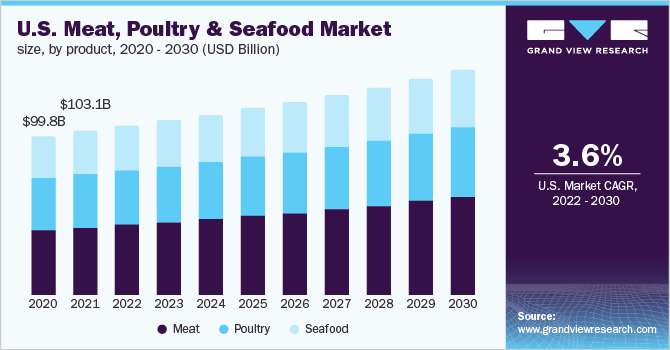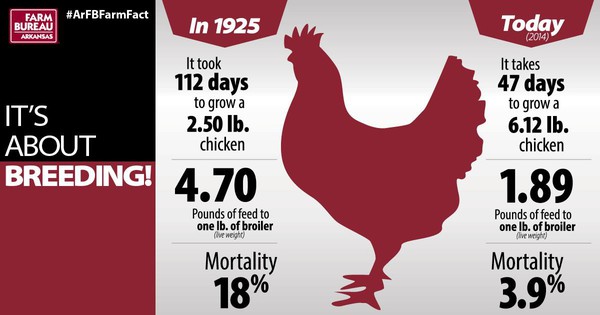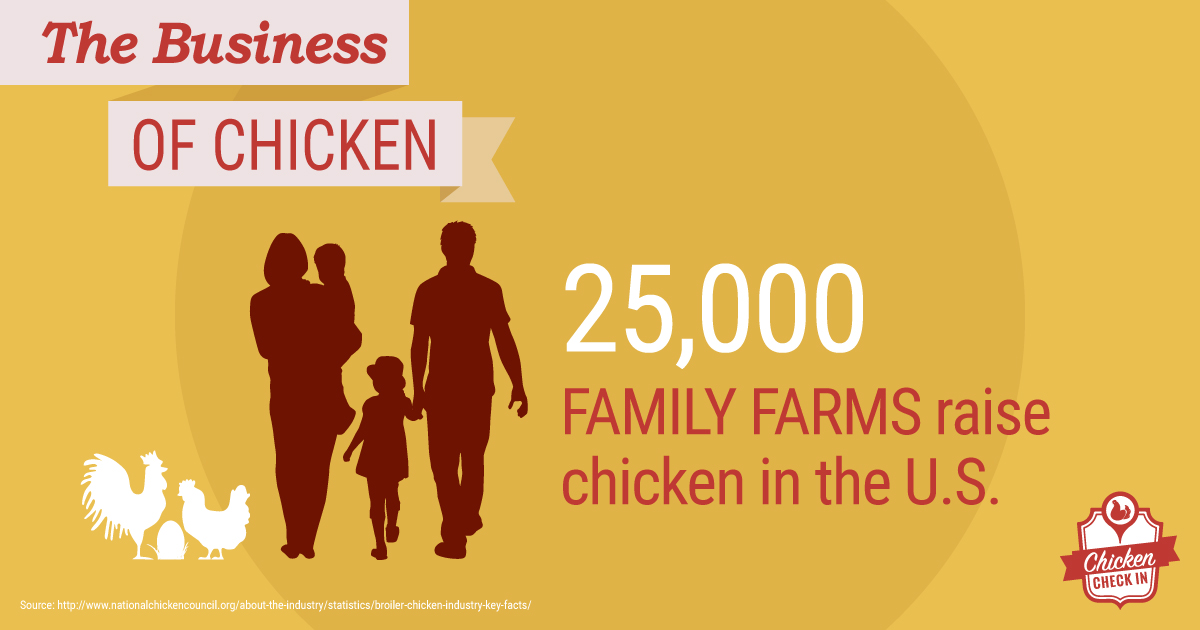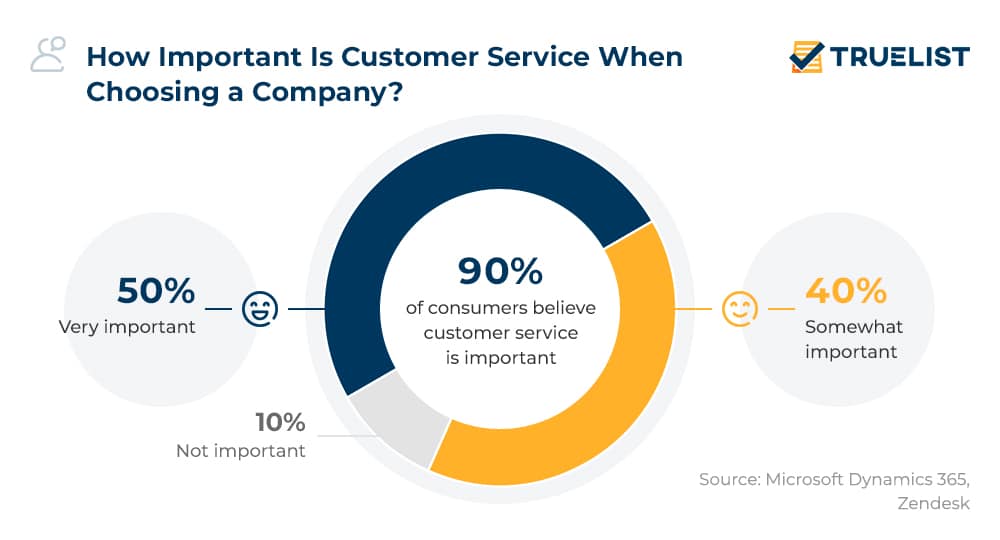The poultry industry is big business, with the global market projected to grow at a compound annual growth rate (CAGR) of 8.6% from 2023 to 2033. Demand for poultry grows as more consumers seek affordable and healthy protein sources. Starting your poultry farm can be a profitable endeavor.

Launching any agriculture business requires thorough planning and preparation. This guide will walk you through how to start a poultry farm. From choosing the right location and facilities, buying equipment and livestock, and managing your finances. With the right groundwork, you can build a rewarding business.
1. Conduct Poultry Farm Market Research
Thorough market research is crucial when assessing the viability of a poultry farm. It offers insight into the target market of your poultry farm, trends in poultry farming services, and average egg production rates.

Analyze your local area. Population density, income levels, access to distributors, and proximity to metropolitan hubs will determine market size and opportunities. Drive the competition route to identify existing suppliers and buyer pain points.
Also assess poultry input costs in your state. The feed, medicines, and equipment prices can vary greatly by geography. Land and construction expenses are also key considerations when budgeting operating costs.
Thoroughly examine available distribution channels too. Research potential partnerships with local restaurants, farmers markets, food hubs, and grocers. Liaise with distributors to understand order minimums, delivery fees, and payment terms. Consider e-commerce and direct-to-consumer models enabled by digital platforms.
Finally, stay abreast of industry trends and innovations. For instance, pasture-raised poultry farming is growing rapidly due to heightened welfare and sustainability demands. Creative diversification into specialty eggs, heritage breeds, or value-added products may reveal lucrative opportunities.
2. Analyze the Competition
Carefully scrutinizing your competition is imperative when launching any business, including a poultry farm. Start by identifying all existing chicken, egg, and poultry companies within a 25-50 mile radius. Visit their facilities to observe operations and have candid conversations to glean insights.

Analyze their products and services mix, production capacity and volume, prices, and unique value propositions. For example, some farms may focus on premium free-range eggs while others supply bulk commoditized eggs to wholesalers. Pinpointing unmet consumer needs can reveal prime openings for your farm.
Evaluate sales and distribution strategies. Most poultry farms sell eggs right from their on-site farm stands. Larger producers deliver to local grocers, restaurants, and regional distributors too. A few innovative players even leverage e-commerce and subscription models.
Scrutinize online presence and marketing initiatives like social media, SEO, email newsletters, and advertising channels. For instance, specialized heritage breed farms targeting affluent foodies may invest more heavily in artisan branding and digital exposure than a bulk egg wholesaler focused solely on volume.
Ongoing competitive analysis is essential even after launch. Continuously track new entrants, expansions, product or service changes, pricing moves, and major customer wins or losses. This intelligence will prove invaluable for staying ahead of shifts in your regional poultry marketplace over time.
3. Costs to Start a Poultry Farm Business
Launching a poultry farm entails significant upfront investment. From facilities and equipment to livestock and labor, be prepared to spend from $10,000 up to $500,000+ depending on scale (usually less costly than starting other types of animal farms e.g. dairy farms).
Startup Costs
- Expect land costs between $5,000- $100,000. Consider leasing if buying is unaffordable.
- Build proper chicken coops with nesting boxes, roosts, and ventilation for flock health and safety. Budget $10-$50 per bird for basic coops up to intricate movable enclosures.
- Install utility lines, roads, drainage, exterior fencing/netting, and security elements. This can run $5,000-$30,000+ for smaller hobby farms.
- Buy or rent tractors, loaders, conveyors, conveyors, generators, plucking/de-feathering machines, refrigerators, de-feathering tubs, waterers, and feeders. Plus cleaning supplies, egg baskets, and other farm essentials. Budget up to $50,000.
- Acquire chicks, pullets, or mature egg-laying hens based on production timeline needs. A batch of 25 heritage breed chicks is around $150 while 25 ready-to-lay hens could run $500+.
- Register your business, adhere to local zoning laws, and acquire any required operating permits or certificates depending on the products sold. Liability insurance is mandatory expect to budget $1,000-$5,000/year.
- Consult lawyers, accountants, and advisors to ensure full legal and financial compliance when starting your entity. Allot $3,000+.
- Hire experienced staff to manage day-to-day poultry operations unless farming yourself. Employees will add $15,000 – $150,000+ to the payroll based on workload and qualifications.
Ongoing Costs
- One of the largest recurrent costs. On average $0.40-$0.50 spent per hen monthly. For a 500 hen flock that equates to $200-$250 weekly just on feed.
- Preventative flock treatment and medications will likely run $50+ monthly excluding any emergency vet bills for diseased birds.
- Electricity, gas, waste removal, and water for the entire property must be covered regularly. Easily $500 monthly for smaller farms.
- Equipment upkeep, infrastructure fixes, and housekeeping to keep the farm running smoothly. Budget $100-$500 monthly.
- From egg cartons to branding, digital ads, and farm stand displays. This can stretch to $200+ monthly, more if selling to grocers or distributors.
- Payroll processing fees, income taxes, license renewals, and product liability insurance. Bank on $1,000+ annually.
With lean operations and efficient processes, poultry farmers can yield solid returns. Establishing the road to profitability requires significant capital reserves to establish a fully functional farm from the ground up. Careful financial planning and budgeting is a must.
4. Form a Legal Business Entity
When establishing a poultry farm, choosing the right legal structure is critical for limiting personal liability and supporting future growth. The four main options each have distinct pros and cons for this industry:
Sole Proprietorship
Simple and inexpensive to set up, with all profits flowing through to the owner’s tax return. However, the owner assumes unlimited personal liability for debts and legal actions against the business. This exposes their assets – a substantial risk in an industry prone to lawsuits should taint eggs and sicken customers.
Partnership
Similar to a sole proprietorship, ownership, and liability are shared between two or more partners based on percentage stakes. While costs remain low, liability risk is also amplified by relying on multiple partners to remain legally compliant. Disagreements between partners can also complicate operations and even dissolve the business.
Limited Liability Company (LLC)
The LLC structure protects the owner’s assets by legally separating them from the business. Profits pass through to owners avoiding corporate double taxation. Owners have flexibility in structuring shares and decision-making authority. Startup costs range from $500-$1500 including state registration fees.
Corporation
Establishing a separate legal entity that can accumulate capital by selling stock in itself. Owners (shareholders) enjoy limited liability like an LLC, but corporate profits face double taxation if distributed as shareholder dividends. The corporation structure better suits medium-large poultry producers seeking to raise substantial investment capital for exponential growth.
5. Register Your Business For Taxes
Before selling any products or hiring staff, poultry farms must obtain an Employer Identification Number (EIN) from the IRS. The EIN functions like a social security number for your business for tax and identification purposes.
Acquiring an EIN is free and easy directly through the IRS website. Simply navigate to IRS.gov and click “Apply Online Now” under the EIN Assistant. This launches a simple questionnaire to establish your business entity and ownership details.
The online assistant then displays your EIN immediately upon submission of the form. The entire process typically takes less than 10 minutes. Simply keep this unique 9-digit number on file for your tax filings and employer documentation.
You’ll also need to register with your state revenue office for tax purposes. Most states require business owners to obtain a seller’s permit, sales tax ID number, or business license for collecting/remitting sales taxes. Fees range from $10-$100+ depending on location. Visit or call your state revenue office to inquire about requirements.
Having an EIN and sales tax ID avoids commingling personal and company funds or tax liability. These registrations legitimize your poultry farm in the eyes of government regulators. Proper licensing also adds credibility with customers while allowing tax-deductible business expenditures.
Remain current on license renewals and tax remittances – failure jeopardizes your farm’s legal standing. Consider enlisting an accountant to ensure full compliance across federal and state tax codes if licensing specifics seem unclear.
6. Setup Your Accounting
Proper accounting is imperative for poultry farms to track costs, identify profit drivers, secure financing, and remain tax-compliant. A new poultry business should keep incoming and outgoing expenses to streamline invoicing, paying staff, and doing taxes.
Accounting Software
Software like QuickBooks automates tasks like invoicing, expense/payment categorization, bank reconciliations, financial reporting, and, tax document preparation based on synced transactions. For instance, animal feed purchases from the farm’s credit card auto-post to the Feed Expense account.
Hire an Accountant
Consider enlisting a bookkeeper or accountant to optimize your configuration for poultry farming factors like inventory tracking, payroll, asset depreciation, and unique regulatory stipulations. Costs vary based on complexity and specialized needs but expect to invest around $500-$2,000 to set up your books correctly.
Open a Business Bank Account and Credit Card
Applying for a business bank account and credit card also simplifies accounting by consolidating all farm expenditures on a single statement. Providers weigh factors like business age, revenue, assets, credit scores, and existing lending relationships when setting credit limits, not personal income alone.
7. Obtain Licenses and Permits
Poultry farms must adhere to diverse legal and health regulations to operate legally. Find federal license information through the U.S. Small Business Administration. The SBA also offers a local search tool for state and city requirements.
Zoning approval ensures your farm activities comply with land use ordinances like minimum property acreage or setbacks from property lines. For example, having 100 chickens may not be allowed in smaller residential-zoned areas or if coops stand too close to a neighbor’s home.
Livestock Movement Permits: Transporting poultry across state lines requires an Interstate Certificate of Veterinary Inspection (ICVI). An accredited veterinarian must examine your flock and furnish this permit confirming the animals’ health before departing.
Poultry farms selling meat require regular inspections by state departments of agriculture. Most mandate compliance under the federal Poultry Products Inspection Act for facilities slaughtering or processing over 20,000 birds annually.
The FDA Food Safety Modernization Act (FSMA) obliges traceability, sanitization, and contamination prevention policies for farms of all sizes. Food safety training ensures you meet stringent handling, storage, packaging, and distribution standards. Expect surprise audits.
Poultry farms selling eggs directly to consumers or resellers need state certification too. This mandates refrigeration protocols, cleanliness standards, and transportation rules to prevent foodborne illnesses. State agriculture agencies administer licenses requiring annual renewal fees of around $25-$50 depending on location.
Safely disposing of dead birds, manure, and contaminated materials cannot legally occur just anywhere. Develop an approved waste management plan detailing volume projections along with recycling/disposal protocols like composting, contractor removals, or field applications.
8. Get Business Insurance
Business insurance is non-negotiable for poultry farms to safeguard against potentially enterprise-ending risks. Prime coverage options include:
- General Liability Insurance covers third-party property damage, bodily injuries, or associated legal expenses stemming from farm operations. This protects assets if, for instance, a customer slips/falls in your egg shop or tainted poultry sickens patrons.
- Flock Insurance reimburses lost income if birds become injured/diseased/stolen. One year a predator infiltrates layers of house – without coverage the entire flock loss could halt cash flow.
- Farm Equipment Insurance for replacing damaged tractors or combines helps avoid major replacement costs impairing daily functions.
- Building/Facility Coverage for rebuilding essential infrastructure like chicken coops or egg processing rooms after disasters like fires, floods, or storms. Lacking this, one tornado could wipe out years of investment.
- Product Liability Insurance shielding against financial claims tied to food contamination or associated recalls. For example, if full freezer stocks of chicken parts require disposal after customers report illnesses.
- Workers’ Compensation Insurance is also essential for paying for/treating worker injuries like animal bites or falls – while protecting the farm from related lawsuits.
Agents will securely submit applications to various carriers’ underwriting departments who determine eligibility and rates after assessing risks. Things like claims history, farm safety protocols, and acreage can sway pricing significantly.
9. Create an Office Space
Having dedicated office space allows poultry farmers to handle administrative tasks, consultations, and planning meetings efficiently away from noisy barn distractions. Options include:
Home Office
Converting a spare bedroom or basement offers affordable startup workspace with no commute. However, household distractions can easily undermine productivity. Dedicated structures like sheds better isolate without sacrificing convenience. Expect around $2,500-$5,000 to start.
Coworking Space
Shared workspaces like WeWork provide modern private offices, conference rooms, phone booths, and open desk areas for a monthly fee starting around $300. Networking with other entrepreneurs proves valuable for picking up best practices while avoiding social isolation. However, remote locales may prove inconvenient for quick site visits.
Retail Office
Customer-facing production farms could dual-purpose a section of their farm stand retail space as a makeshift office at no added real estate cost. Just install partitions for privacy during necessary calls or meetings. However, the lack of sound insulation remains less than ideal for productivity.
Commercial Office
Leasing an inexpensive standalone office closer to metropolitan areas centralizes operations near essential services and talent. But with base rents around $12-$20 per square foot, this adds steep overhead costs that likely outweigh benefits for most single-location egg or poultry operations.
10. Source Your Equipment
Obtaining the right poultry farming equipment for your chicken farm could impact how successful it is. A new chicken farming business requires top-notch poultry feed, a chicken coop, nesting boxes and other intensive poultry housing systems, chicken wire, and more. Some ways to source your equipment include:
Buying New
Specialty livestock supply stores and equipment manufacturers offer turnkey new housing, feeding, and watering systems guaranteeing full functionality. Homesteader Supply and Growers Supply are great places to start. Costs run from $10,000-$500,000 depending on scale and automation.
Buying Used
Previous farmers upgrading equipment sometimes sell reliable housing and accessory inventory for 20-50% discounts. Check classifieds, auction sites, and local listings for deals. Facebook Marketplace and Craigslist often offer used materials. Ensure proper disinfection beforehand.
Rentals
Some equipment companies rent out big-ticket items like tractors, excavators, and waste conveyors for several hundred dollars weekly, cutting large capital outlays. But long-term costs add up fast.
Leasing
Essential assets like housing systems or plucking machinery can be leased over 3-7 years. This eases the impact on capital reserves by spreading costs over useful life through fixed monthly payments. Expect about 10-20% premiums above the outright purchase price when leasing.
11. Establish Your Brand Assets
Cultivating a strong brand helps poultry farms build customer loyalty, charge premium prices, and expand via word-of-mouth referrals. Begin by securing branding assets that reinforce professionalism and memorability.
Get a Business Phone Number
Acquire a unique phone line from providers like RingCentral to field buyer inquiries and distributor negotiations professionally. Custom-recorded greetings also showcase branding from first interactions.
Design a Logo
Create a sleek logo encapsulating your poultry niche, values, and visual identity. Options range from free DIY builders like Looka to hiring a designer for $500+. Clean vector art logos apply easily across print and digital touchpoints. Consider an anthropomorphized character, farm scene, or abstract motif – just make it distinct.
Print Business Cards
With logo files, order branded assets like employee uniforms, barn signage, product packaging, and stationery suites with vendors like Vistaprint. Business cards also enable sales team networking and buyer referrals at trade events. Without professional collateral, you lose trust and credibility.
Get a Domain Name
Secure web domains reflecting your farm’s name or region across common extensions. Namecheap offers domains from $9-$49 annually. Descriptive URLs aid discoverability and cement your brand identity online.
Design a Business Website
You can then develop a custom website via DIY site builders like Wix for $100-$300 annually. Or hire web developers on platforms such as Fiverr to construct more complex e-commerce marketplaces allowing direct poultry sales. Either approach furnishes online visibility and sales channels.
12. Join Associations and Groups
Tapping into industry associations furnishes invaluable mentorship and education for aspiring poultry farmers. These groups connect entrepreneurs with specialty training, shared best practices, and niche networking opportunities.
Local Associations
State-level farming bureaus like the California Farm Bureau offer tailored programs assisting niche operators. Expect poultry-focused discussion groups, training seminars, youth education initiatives, and policy advocacy assistance. Regional associations like the Pacific Egg and Poultry Association provide similar niche support too.
Local Meetups
Attending local agriculture industry mixers and tradeshows facilitates lead sharing with fellow livestock suppliers and potential buyers like grocers or restaurateurs. Sites like Meetup catalog upcoming events nearby. Tradeshow entry fees span from free to $500 depending on scale. Bring plenty of business cards and product samples.
Facebook Groups
For on-demand advice from fellow poultry experts globally, groups like the South Georgia Farm And Poultry and North Texas Poultry Farm share niche production tips daily. Discuss disease prevention, new regulations, predators, seasonal issues, and equipment queries with seasoned veterans just a post away for free.
13. How to Market a Poultry Farm Business
Implementing marketing campaigns is imperative for customer acquisition and revenue growth. While word-of-mouth referrals from your network offer an initial boost, proactive promotion expands visibility continuously.
Referral Marketing
For example, offer regular patrons incentives like 10% off coupons to refer new customers. First-timer referrals validate quality and trust while discounts entice sharing.
Digital Marketing
Digital channels present low-cost opportunities to connect with local communities. Consider:
- Google Ads geofencing households within a 20-mile radius, bidding on niche keywords like “pasture-raised eggs”
- Facebook/Instagram ads spotlighting your farm’s sustainability initiatives or unique heritage breeds
- Launching a YouTube channel creating weekly vlogs documenting chick hatchings or new coops
- Email newsletters with quick recipes and health benefits of your eggs or meat
- Search Engine Optimization via long-form blog content driving organic traffic
Traditional Marketing
Traditional approaches also furnish tangible impressions, especially for older demographics. Ideas include:
- loyal customer mailing lists receiving holiday cards or announcements of the special flock
- Printed flyers at local grocers, feed stores, and farmers’ markets driving foot traffic
- Radio spotlights on community stations endorsing the positive local impact of family farms
- Classified listings in regional agriculture magazines and newspapers
- Billboards along nearby highways for broad exposure at a low relative cost
Remember that today’s small purchase leads to tomorrow’s bulk contracts. For example, hosting farm tours for a children’s school group seeds lifetime affinity for your specialty products. This community goodwill tends to engender viral word-of-mouth praise. Guinea fowl eggs may seem niche.
14. Focus on the Customer
Delivering exceptional service distinguishes thriving poultry farms from failed competitors. Satisfied patrons provide free marketing via word-of-mouth referrals, online reviews, and repeat sales.

For example, engage sincerely with every customer. Enthusiastically answer questions about your humane practices or sustainability initiatives. Offer cooking tips matching eggs to their planned dishes. This conversational rapport shows you care beyond just transactions.
Following up on discussions builds meaningful relationships too. Keep brief customer profiles noting individual needs and interests. Then reach out occasionally with relevant offerings. If a buyer mentioned baking cakes, email specialty duck eggs optimal for pastries weeks later.
Incentivize referrals or reviews by including some complimentary eggs with each new customer sent your way. First-timers get a favorable impression while their advocate earns rewards for spreading authentic praise.
